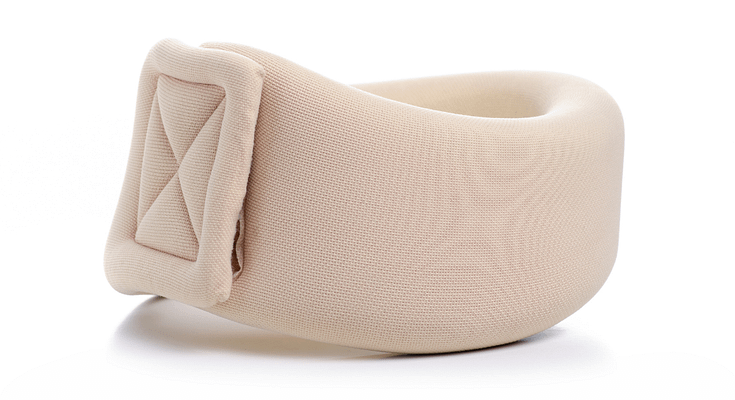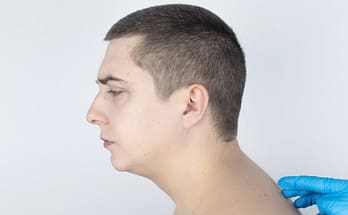Forward head posture is a common condition that affects millions of people in the United States. Forward head posture can cause chronic pain, but there are a few things you can do to correct it.
First, see a chiropractor or orthopedist to determine if you have forward head posture and to check for underlying conditions. You should also address poor posture through stretching and strengthening exercises and ergonomic changes in your daily habits.
One option that some people use for forward head posture is wearing a neck brace.
There are many types of neck braces on the market, each offering its benefits and drawbacks. The most common type of brace is made from plastic or metal and applies pressure to the muscles and bones in your neck. This action helps prevent further damage to these areas and keeps you from slouching even more.
The downside of this type of device is that it can cause discomfort when you first start wearing it, especially if your neck muscles are already tense or tight due to poor posture habits or injury. However, over time you’ll likely see an improvement in how much effort it takes to hold up your head and shoulders while sitting or standing straight up with good alignment.
What is a neck brace?
A neck brace is a type of support device that helps to correct Forward Head Posture. Neck braces are made from a variety of materials, including neoprene, velcro, and even metal.
Many types of neck braces are available on the market today; however, each would work best for different kinds of FHP cases. For example:
- A soft neoprene brace works great for people with minor symptoms who have suffered from whiplash or an injury that caused their head to move forward in just one direction (such as when playing sports).
- A rigid plastic brace works well for most people with moderate symptoms due to Forward Head Posture. This type of brace is more effective than the soft version because it provides extra support by gently pulling your head back into place whenever you move forward out of alignment.
Why wear a neck brace?
Neck braces are designed to prevent the forward head posture, often seen in people who have suffered a whiplash injury or other types of neck trauma. The brace gently pulls your head back into alignment when it moves forward out of place, which can help relieve pain and stiffness in your neck while also improving your posture.
A neck brace is a great way to prevent forward head posture and its potentially painful symptoms. A proper fitting brace will do more than help you stand up straight. It can also improve your overall body alignment and posture over time.
How does a neck brace help with forward head posture?
If you have forward head posture, your muscles are constantly in a state of contraction. The muscles in your upper back and neck are under constant strain and feel tight and stiff because of the way we sit at our desks all day long, slouching over our laptops or phones.
A neck brace compresses the neck and shoulders, which reduces their ability to contract by relaxing them (in other words, it makes them less tense). It allows these muscles to return to their normal position so that they don’t remain in an unnatural position for such long periods, which can cause forward head posture. It also means that the muscles are less likely to contract and tighten up again, which is what causes pain.
This makes a neck brace an effective way of treating forward head posture: it allows these muscles to relax, which means they can return to their normal position and stop causing pain in your upper back and neck area.
A neck brace may accelerate the recovery process.
A neck brace is not a cure for forward head posture but can accelerate recovery.
Neck braces are also not comfortable to wear. However, if you have a bad habit of letting your head drift forward and down, wearing a brace could help you maintain better posture for longer periods throughout the day—and reduce pain caused by poor posture.
The first step is finding a brace that fits well and doesn’t cause chafing or irritation under your clothes (if you’re going to be wearing it 24/7). Remember that different brands may fit differently across different body types and shapes, so don’t feel like there’s one brand out there that works best for everyone!
The best neck braces will be adjustable, comfortable, easy to put on
A good neck brace should also have a high-quality build that is durable and long-lasting but also light enough to wear comfortably under clothing. It should be adjustable to customize the fit to your liking—especially if you’ve had surgery on your spine or back.
In addition to comfort and fit, a good neck brace should also be easy to put on and take off. Some models are designed with quick-release buckles that make adjusting the fit even easier. Others have Velcro straps that allow you to adjust the size without removing any part of your brace!
Choose the right neck brace
The best neck brace can be a great way to help relieve pain and discomfort caused by injuries or surgery. It’s important that you choose one that fits well is comfortable, and will provide the support you need to get through your recovery period. If you’re not sure which model is right for you, consider these factors when shopping for a new neck brace:
1. Consider How You Will Use the Neck Brace
If you’re going to be in and out of your brace for part of the day, it’s best to choose one that is comfortable and easy to put on and take off. If you are wearing it all day long, look for a model that offers more support or has padding designed specifically for this purpose. If you’re going to be in and out of your brace for part of the day, it’s best to choose one that is comfortable and easy to put on and take off. If you are wearing it all day long, look for a model that offers more support or has padding designed specifically for this purpose.
2. Consider Your Budget
Neck braces can vary widely in price depending on the brand, materials used, and features included. Consider how often you’ll need to replace the brace and what features are most important to you when deciding which model is right for your needs.
3. Consider Your Comfort
Neck braces are designed to protect your neck from injury, but they can’t do so if you don’t wear them. If you find a particular model uncomfortable or doesn’t fit quite right, consider getting a different size or model before using it in any sporting activity.
4. Consider Your Activities
Some neck braces are designed specifically for certain activities, while others can be used in various situations. For example, if you’re interested in mountain biking or snowboarding, you’ll want to look for a model tailored to those activities and includes features such as back protection. On the other hand, if you only plan on using your brace occasionally for recreational skiing or skateboarding, it may be less important for you to purchase one specific to those sports.
How to get the most benefit from wearing a Neck Brace
1. Make Sure It Fits Properly:
A neck brace should fit snugly but not too tightly. If you’re unsure how to wear one properly, consult your doctor or physical therapist for advice on getting the right fit.
2. Wear It Correctly:
When wearing a neck brace for the first time, wear it slowly and carefully so that you don’t accidentally trap your fingers in between two plastic parts. You should wear a neck brace like any other protective equipment, like a helmet or knee pads.
3. Use It Correctly:
If you’re new to wearing a neck brace, take some time before your first ski trip to practice putting it on and taking it off in front of a mirror until you feel comfortable doing so. When wearing the neck brace, ensure it fits snugly and doesn’t move around on your body. If it does, adjust it until it feels secure.
4. Clean It Regularly:
To keep your neck brace in good condition for as long as possible, clean it regularly with soap and water or rubbing alcohol.
5. Replacing It:
If you’ve had your neck brace for more than a year, consider replacing it.
6. Store It Properly:
When you’re not using your neck brace, store it in a cool, dry place where children can’t get to it.
Neck braces are useful for treating and preventing forward head posture and neck pain. They’re also good for treating injuries to the cervical spine, such as whiplash, and preventing sports-related head injuries. If you have a neck brace or are considering getting one, make sure it fits properly and is comfortable. If you’re still unsure whether or not you need one, consult your doctor or physical therapist.




